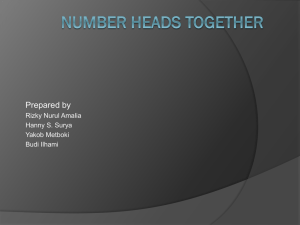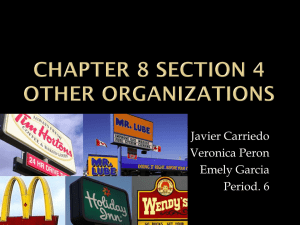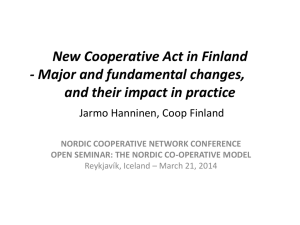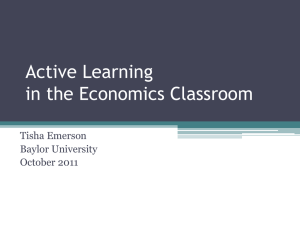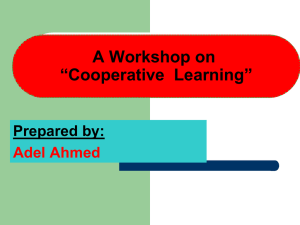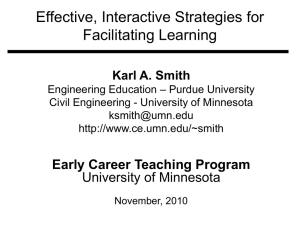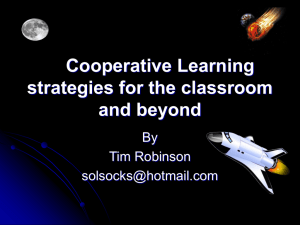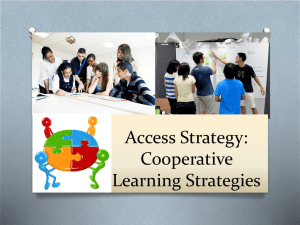Cooperative Learning
advertisement
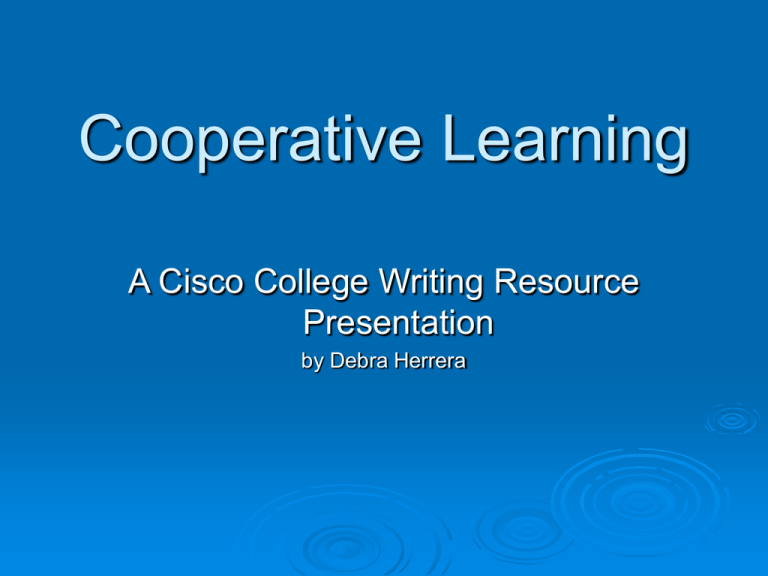
Cooperative Learning A Cisco College Writing Resource Presentation by Debra Herrera Cooperative Learning Cooperative learning, also called collaborative learning, occurs whenever students interact in pairs or groups to share knowledge, complete assignments, and accomplish goals. Cooperative Learning Teachers specify the objectives for the lesson explain the task monitor students’ learning & intervene to provide assistance assess student learning help students evaluate group performance Cooperative Learning Cooperative learning is NOT: having students sit side by side as they do their work having students who finish first help slower students one student completing the work and others putting their name on it Cooperative Learning Fosters: positive interdependence group & individual accountability social skills critical thinking and perspective taking Cooperative Learning Jigsaw Think-Pair-Share Brainstorming Three-Minute Review Numbered Heads Together Circle the Sage Partner Share Cooperative Learning--Jigsaw Groups of five students are assigned new material to learn and then teach to his group members. Students across the class working on the same sub-section work together to learn. Afterwards, students in the “expert” groups return to the original group to teach each other. Cooperative Learning—Think-PairShare Individuals think silently about a question posed. Partners share thoughts, and then share with other pairs, or the class. Cooperative Learning-Brainstorming Class is divided into small groups, with one person appointed as the recorder. A question is posed. After think time, members share responses as recorder writes them down. Cooperative Learning—Three Minute Review During discussion, teacher stops and gives teams 3 minutes to review what has been said, ask questions, or answer questions. Cooperative Learning—Numbered Heads Together Teams are established, and each member is given a number. Teams work together to answer a question. Teacher calls out a number (three) and each three is asked to give the answer. Cooperative Learning—Circle the Sage Teacher polls the class to find out which students thoroughly understood the new learning. These students (sages) spread out in the room and explain the concepts to 2 or 3 students, who then return to their group and compare notes. References Johnson, D.W., & Johnson, R. (1989). Cooperation and competition: Theory and research. Edina, MN: Interaction Book Company. Spencer Kagan Material taken from the work of:


